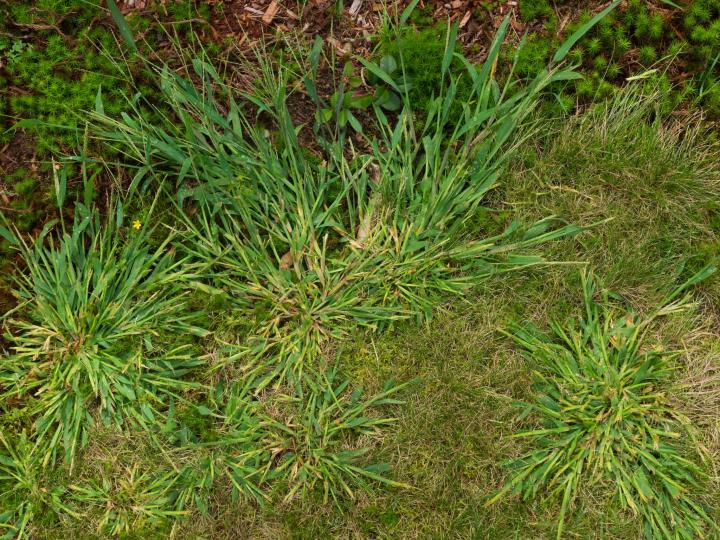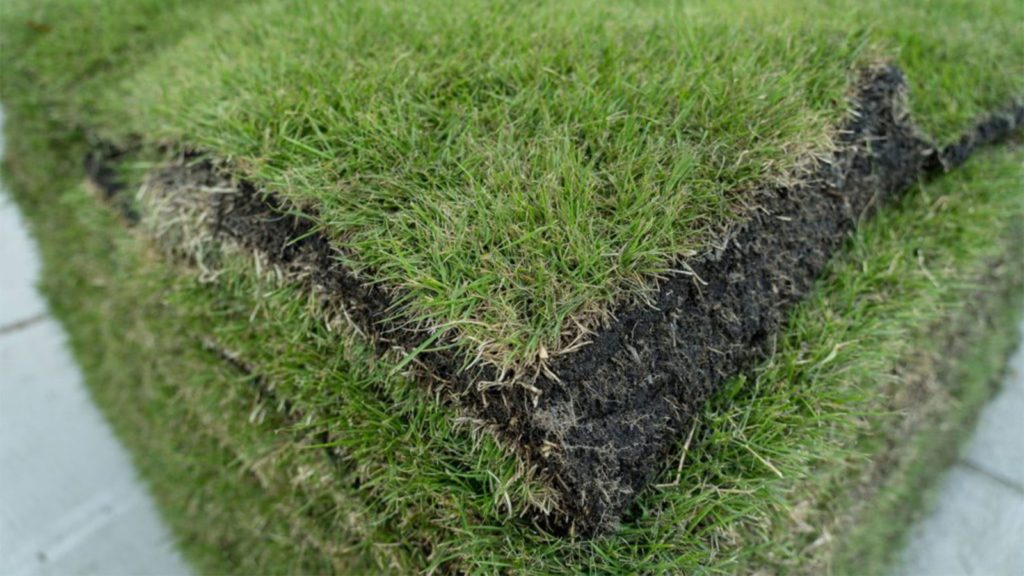To fix a lawn with different types of grass, identify the specific grass types present and then address their unique needs accordingly. Having a lawn with different types of grass can create challenges for homeowners.
Uneven growth, color variation, and poor overall appearance can result from having multiple grass types. Luckily, there are effective solutions to fix such issues and restore a healthy and uniform lawn. The first step is to identify the different grass types present.
This can be done through visual observation or by seeking professional assistance. Once the grass types are identified, specific measures can be taken to address each type’s unique needs. By implementing appropriate watering, fertilizing, mowing, and overseeding techniques, a mixed-grass lawn can be transformed into a vibrant, cohesive landscape. We will explore various strategies and tips for fixing a lawn with different types of grass, helping you achieve a lush and uniform lawn.

Credit: www.almanac.com
Different Types Of Grass For Fixing Your Lawn
Different types of grass are available for fixing your lawn. Warm-season grasses include St. Augustine, Bermuda, Zoysia, and Bahia grass. These grasses thrive in warmer climates and can withstand heat and drought. St. Augustine grass is popular in southern regions due to its shade tolerance and ability to recover from damage.
Bermuda grass is known for its resilience and ability to grow in a variety of soil types. Zoysia grass is a low-maintenance option that forms a dense and lush lawn. Bahia grass is often used in coastal areas due to its salt tolerance.
On the other hand, cool-season grasses such as Kentucky bluegrass, fescue, and ryegrass are suitable for colder climates. Kentucky bluegrass is a popular choice for its dark green color and excellent cold tolerance. Fescue grass is known for its shade tolerance and drought resistance.
Ryegrass is often used for overseeding to maintain a green lawn during winter. Choose the type of grass that best suits your climate and lawn conditions to fix your lawn effectively.
How to Fix Lawn With Different Types of Grass: Step by Step Guide
Assessing Your Lawn’S Needs
Assess the needs of your lawn by identifying problem areas such as bare patches, weeds invasion, and diseased or damaged areas. Take into consideration the climate and soil type, evaluating the temperature and rainfall patterns. Also, determine the soil pH and fertility levels.
Choosing The Right Grass Type
When fixing your lawn, it’s essential to choose the right grass type. Consider its shade tolerance, drought resistance, and wear tolerance. Additionally, think about its maintenance requirements, including mowing height and frequency. Fertilization needs, disease control, and pest control are also important factors to consider.
By matching the grass type to the problem at hand, you can ensure that your lawn thrives and looks its best. So, take the time to assess your lawn’s specific needs and choose the appropriate grass type accordingly.
Preparing And Establishing New Grass
Preparing and establishing new grass involves removing existing turf and weeds through manual sod removal or herbicide application. Additionally, improving soil conditions by aerating and dethatching is essential. Moreover, adding organic matter helps enhance the soil’s fertility. In this process, selecting the right seeding or sodding method is crucial.
Overseeding allows for filling in thin areas, while sodding provides instant coverage. By following these steps, you can effectively fix your lawn and achieve a lush and healthy grass cover.
Caring For New Grass
Caring for new grass involves establishing a watering schedule to promote healthy growth. Avoid overwatering or underwatering to prevent damage. Fertilization and weed control are key to maintaining a lush lawn. Choose the right fertilizer based on your grass type and soil conditions.
Apply herbicides and pre-emergent products to prevent weed growth. Regular mowing and maintenance are essential. Maintain the proper mowing height and use correct techniques to avoid stress on the grass. It’s important to deal with common lawn issues promptly to prevent further damage.
By following these guidelines, you can fix your lawn with different types of grass and achieve a beautiful, well-maintained yard.
Transitioning Between Grass Types
Transitioning between grass types can be a challenging task for lawn owners. Preparing for the transition involves various steps such as weed control and removal of existing turfgrass. Soil testing and necessary amendments should also be conducted to ensure optimal conditions for new grass types.
Overseeding or sodding can be effective ways to introduce new grass varieties into your lawn. It is important to employ proper techniques during this process to achieve the desired results. Managing the transition period requires continuous maintenance and monitoring. By following these guidelines, you can successfully fix your lawn with different types of grass, resulting in a lush and healthy landscape.
Troubleshooting Common Issues
Patchiness or uneven growth in your lawn can be a frustrating issue to deal with. One of the first steps in troubleshooting is identifying the potential causes. Whether it’s due to soil conditions, poor drainage, or heavy foot traffic, understanding the root of the problem is essential.
Once you’ve determined the cause, you can move on to finding a solution. Reseeding or resodding are common methods to address patchy areas and encourage even growth. However, it’s important to also consider diseases and pests as potential culprits. Familiarize yourself with common lawn diseases and their symptoms to effectively combat them.
Depending on the issue, treatment methods may vary, so it’s important to select appropriate options for your specific problem. By following these troubleshooting steps, you can fix your lawn and enjoy a lush, healthy outdoor space.
Frequently Asked Questions For How To Fix Lawn With Different Types Of Grass
Why My Lawn Has Different Types Of Grass?
Different types of grass can grow in your lawn due to factors like soil conditions, sunlight exposure, and seed dispersal by birds or wind.
Can You Mix Grass Types In Lawn?
Yes, you can mix grass types in your lawn. However, it’s important to choose compatible varieties that will thrive in your area.
How Do I Change From One Type Of Grass To Another?
To change from one type of grass to another, follow these steps: 1. Remove the existing grass by using a sod cutter or manually digging it up. 2. Prepare the soil by tilling it and removing any debris or rocks. 3.
Choose the new type of grass that suits your needs and climate. 4. Lay the new grass by using seed, sod, or plugs, following the instructions for that particular grass type.
Can You Mix Bermuda And Fescue?
Yes, you can mix Bermuda and fescue grass types in your lawn.
Conclusion
To sum up, fixing your lawn with different types of grass requires understanding the characteristics of each grass variety and assessing the specific needs of your lawn. By identifying any existing issues, such as shade or heavy foot traffic, you can choose the right grass type to address these problems.
Whether you opt for warm-season varieties like Bermuda grass or cool-season options like Kentucky bluegrass, it is crucial to properly prepare the soil, seed or sod, and provide consistent maintenance. Regular watering, mowing, and fertilizing will encourage healthy growth and establish a lush lawn.
Remember, patience is key as achieving a fully restored lawn takes time. With careful planning and attention to detail, you can enjoy a beautiful and vibrant lawn that enhances the overall appeal of your property. So roll up your sleeves, follow these steps, and transform your lawn into a picturesque oasis.

